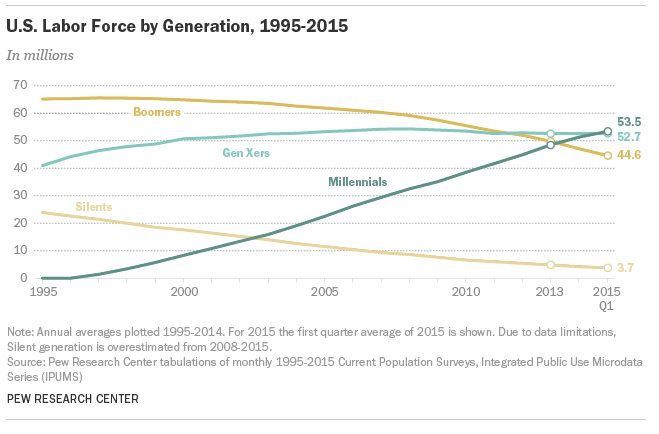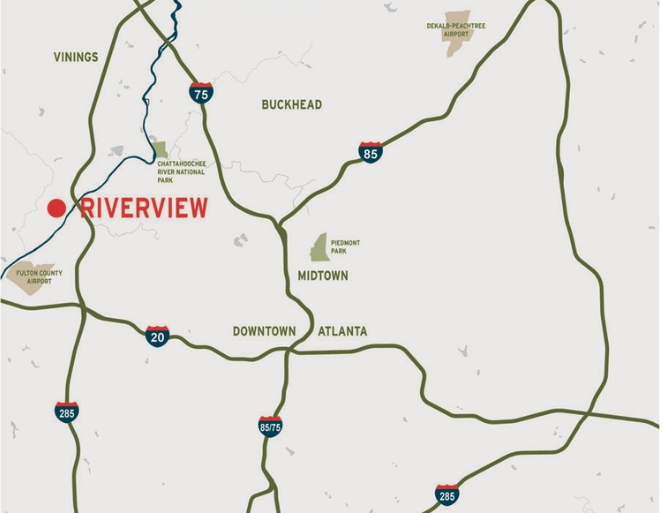Atlanta, the City Made for Millennials
The rise and growth of a new generation heading into adulthood and taking control of vibrant new opportunities and stepping into the workforce is often fascinating to watch and know about. In particular, location is key into observing where the new up and coming generation is migrating and adapting to. Of the world today, Millennials are now the focus of all major cities and well-known companies because of the level of technology and young vibe that this generation can offer to booming cities. The built environment of the city of Atlanta offers a great outlet for Millennials to progress and adapt well to living and working in. The city of Atlanta is a major city and a main hub for many big corporations with an abundant amount of resources within the city that cater towards every age group, class, and ethnicity sector. Millennials however thrive and adapt to the built environment of Atlanta much more than any other group residing in the city. This will also affect the future of the city as well as the future generations wanting to migrate and experience living in the city as opposed to suburban areas of Georgia.
The built environment of Atlanta is very attractive to Millennials because of the unique atmosphere the environment brings that is not found anywhere else throughout the state. Historically, the state of Georgia offers counties and neighborhoods that are majority white populated which are inevitably enclosed with aspects of conservativeness and unprogressive views. As the site The Millennial Legacy states in its article discussing progressive views of millennials, “In terms of homosexuality, interracial relationships, gender roles, immigration, and religion, poll after poll and study after study confirms that Millennials hold decidedly more progressive views than all other generations alive today, and in history.” As Millennials eventually drift away from the hometowns they were born and raised in, searching for a space that has a built environment they most passionately identify with is crucial to the atmosphere they want to live. An article released giving recognition to the top progressive cities that are perfect for people under 30 comprise the city of Atlanta for its many unique and distinctive neighborhoods and also because of how well known the city has become for hosting the biggest film industries outside of L.A. and New York. This exemplifies that the city is not only progressive in terms of politics, but also in different areas such as entertainment and technology as well. The built environment of Atlanta consisting of neighborhoods that emit hipster vibes make Millennials adapt to the atmosphere of the city much more than any other generation.
The core of a particular locations “built environment” first has to do with what purpose that specific area or space serves. When discussing Millennials being attracted to the built environment of Atlanta, we first must recognize what specific shops and attractions this space provides that is so appealing to this generation. As Millennials are in the stages of beginning to start entering the workforce, it is essential that they are located in area that provides endless opportunities and populated with booming corporations and industries. Millennials need options, resources, and security. “Naturally, Millennials are attracted to markets with good job prospects and low unemployment,” said Daren Blomquist, vice president RealtyTrac. As Atlanta having one of the lowest unemployment rates in the nation, many doors are open for the upcoming newly received degree holders which in fact are Millennials. Peachtree center located in the heart of Atlanta is composed of urban city businesses, company headquarters, and upscale professional industries. This built environment of Atlanta gives the city the nation’s leading metropolitan area in terms of population growth and job creation over the last three decades (Rutheiser 9). Psychologically, the atmospheric vibes of the urban built environment lifestyle of Atlanta emits feelings of motivation and drive that pushes Millennials to go out and conquer elite jobs that are mostly attractive in Atlanta because of the urban layout and design.
Part of Atlanta’s built environment that keeps this space successful is keeping the economy always thriving and being up to date and resourceful with up to date technology. Atlanta poses a well advanced technological atmosphere in which Millennials excel in and in which all others get weeded out and fail in. Advanced technology incorporated with successful companies build the basic built environment of Atlanta. Downtown Atlanta is attracting companies that are looking to employ Millennials, and many of them are opting for Peachtree Center (Leclaire).

According to Pew, for the first time the Millennial generation aged from 18 to 34 are now the largest segment of the workforce. This data provides evidence that the workforce, in particular city businesses, are now populated with the younger generation. “Every city out there is trying to recruit highly educated 20-somethings, that’s how you drive the economy in this digital age (Cornett). The built environment of Atlanta initially requires that Millennials occupy the area not only to keep the youthful atmosphere of Atlanta alive, but initially to keep businesses, jobs, and the economy alive as well.
As companies want to attract Millennials, which are the best quality employees, an environment where there are transportation options and the ability to commute without driving is needed. Atlanta’s built environment caters perfectly to the needs of Millennials and others as well because of the multiple modes of conveyance the city offers. “Downtown offers sidewalks, bike lanes and a streetcar service. In addition, downtown has five MARTA stations, including the largest in the system” Leclaire states. This allows college students and young professionals easy access to populate Atlanta.

(Map of several major highways that all lead to the heart of the city of Atlanta)
Atlanta’s built environment is also largely made up of thriving restaurants and the bar scene catering to the foodie culture that exists among the young professionals and college students. As we observe the lifestyle environmental atmosphere of Atlanta, it is easily noticeable that shops and activities are catered towards young people. As Atlanta poses several famous yoga studios, gyms around every corner, and cutesy bars located relatively close and in walking distance of many apartment homes within the area, the youthful way of life is displayed and felt quite prominently. Atlanta exhibits and features many out of the ordinary spaces and hipster shops/ boutiques that help portray the young vibes of the city. The city offers cool spaces such as Krog Street market, the Beltline, and several bars that only Millennials feel comfortable in. The neighborhood of Midtown in particular is one in which Millennials are most welcome and attracted to because of the all essential shops and stores that are located all with the one area. Midtown is the center for nightlife, business life, and great park areas during the day such as Piedmont Park. Though the population of elderly folks living in this area are numerous, they themselves also display the youthful hipster vibes of Midtown.
As Atlanta is well known for filming famous television shows and movies throughout the city, this prompts adolescents to contently be within the area. This influence of films and celebrities residing and performing daily tasks within the area of Atlanta attracts Millennials to be out and about and eventually associate Atlanta with young fun vibes and feelings. For example, Octane coffee is a famously known coffee shop in Atlanta due to the fact that this is the spot in which many celebrities residing in Atlanta come hangout, chill, and lounge in. This brings many young adolescents to this coffee shop as well as around the area too. Each of these details is what makes the built environment of Atlanta so marketable to Millennials and the future generations wanting to migrate and experience living in the city.
Many may argue that the reality of life seen on the streets of Atlanta negatively affect the future of Atlanta’s residents and future generations of Atlanta, however the built environment of this space is partly made up of aspects of the city like this. Though life in the city is drastically different and surreal than suburban areas within Georgia, many Millennials enjoy experiencing these attributes of the built environment of the city. Millennials love the environment of Atlanta because it is unique and different than any other city within the state. The built environment of Atlanta is always changing and becoming more diverse within cultures, laws, and social acceptance. Millennials are more adapt to change and open with new ideas, values, and principles. Social issues play a large role in the built environment of Atlanta. The city is more open to various gender associations, gay marriage, and legal use of marijuana. These issues are mainly accepted by Millennials and is a factor in which this generation finds the city very easy to adapt too and also be a part of the community. Social issues are where Millennials hold the most progressive views (Progressive).
While the built environment of Atlanta ranges widely based on which specific neighborhood an individual is in, the common psychological feelings of free spirit and the carefree atmosphere the whole city exhibits drives most of the older generations away, and Millennials into relocating and populating the city.
Works Cited
Felder, Ben. “Cover Story: Millennials Are Changing the City Forever | Oklahoma Gazette.” Oklahoma Gazette. N.p., 7 Jan. 2015. Web. 27 Apr. 2016.
Green, Josh. “Cobb Official: Millennials Want a Piece of This Action.” Curbed Atlanta. N.p., 2 Feb. 2016. Web. 26 Apr. 2016.
Leclaire, Jennifer. “Why Downtown Atlanta Attracts Millennials.” GlobeSt.com. N.p., 16 Apr. 2016. Web. 26 Apr. 2016.
Rutheiser, Charles. “Making Place In The Nonplace Urban Realm: Notes On The Revitalization Of Downtown Atlanta.” Urban Anthropology and Studies of Cultural Systems and World Economic Development 26.1 (1997): 9–42. Print.
Mathews, Chris. “Millennials Have Taken over the American Workforce.” FORTUNE. N.p., 11 May 2015. Web. 27 Apr. 2016.
Monitors, Studio. “Progressive.” Web. The Millennial Legacy. N.p., 27 July 2011. Web. 27 Apr. 2016.